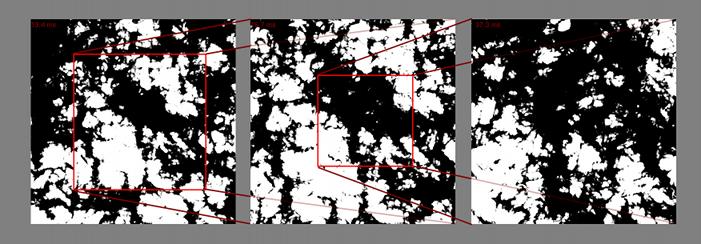
( see video )

(
see video )
1-2 year Postdoctoral position
at
Grenoble, France, at INRIA
contacts:
Fabrice
NEYRET - mail: Fabrice.Neyret@imag.fr
Joelle
THOLLOT – mail: Joelle.Thollot@imag.fr
Romain
VERGNE – mail : Romain.Vergne@inria.fr
applying to this position : see HERE
In several domains in the field of Computer Graphics and
Visualization, one encounters the same paradoxical requirement of
having a pattern that has to simultaneously keep constant aspect
characteristics and accurately follow a motion field. The
pattern might be procedural noise texture [ADV],
sampling of fluid particles [fluids],
or paint marks and canvas in expressive rendering
[NPR].
The characteristics to preserve might be scale, spectrum, histogram,
momentums, or windowed combinations. The motion field might be
screen-space apparent optical flow of a 3D scene, or fluid
motion.
Moreover, temporal coherency is required: besides
appearance preservation and motion conformance, one wants to avoid
all and any perceivable visual artifact either discontinuous
(popping) or continuous (clandestine secondary motion). Many
dedicated models have been proposed in each field, but the induced
secondary motion is the fundamental and difficult issue (almost
unstudied), since it deals with what our visual system perceive or
not of the emerging unwanted consequences of paradoxical main
requirements.
Clandestine secondary motion is already obvious
in very basic cases such as infinite zoom in black and white Perlin
noise (cf image), i.e., thresholded Perlin noise where the components
advected by the 2D radial motion (zoom) are progressively replaced so
as to preserve the noise statistics. This allows to settle a
convenient experimental bench to test the interactions between
various algorithmic combinations, textural characteristics, and
families of perceivable artifacts. Starting with characterizing and
organizing the families of artefacts, to somehow initiates a domain
of artefactology :-) .
A part of the work will consist in
experiments with the bench above, testing the perceptual effect of
various ranges and kinds of statistic preservation or violation
together with objective measures, bibliography in perception studies
so as to make educated guesses, possibly some cheap perception
experiments, but also continuous care about the right control and
meaningfullness of the bench, tested parameters and
criterions.
Beside the beginning of a general understanding of
the issue, we expect from this studies to get recommendations helping
to improve time coherency in various applicative algorithms: Which
kind of transformations are unperceived or extremely perceived, or
which range of parameters make them so. Plus possibly, slight
key-changes in tools, definitions, requirements, normalizations,
so as to avoid ill-posed problems.
References:
[ADV]
Advected textures: http://hal.inria.fr/inria-00536064,
http://www-evasion.imag.fr/Publications/2003/Ney03/
[fluids]
Scalable river animation:
http://maverick.inria.fr/Publications/2009/YNBH09/
[NPR1]
Animated paints: http://hal.inria.fr/inria-00510250/
, http://hal.inria.fr/inria-00463592/
[NPR2]
Animated stylisation: http://hal.inria.fr/inria-00487986/
, http://hal.inria.fr/inria-00636210/
Computer Graphics;
Practical experience of texture or shader or ink/paint procedural generation would be a plus;
Strong motivation about questionning questions and evaluating evaluations before doing brute math or programming.
Applying to this position : see HERE